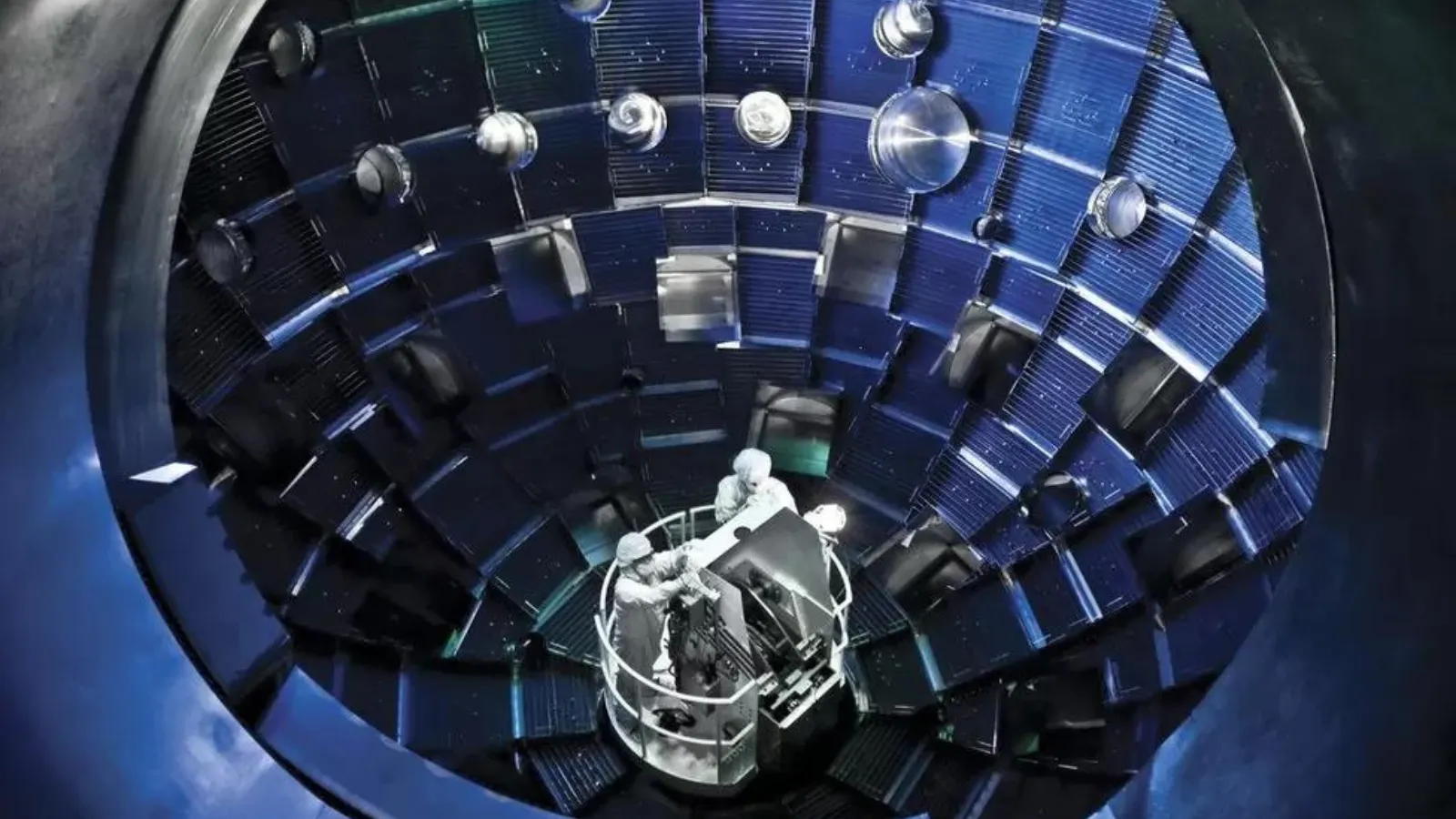NIF achieves energy gain
Exciting news was officially announced by the U.S. Department of Energy today, 13th December 2022 (although it leaked 2 days ago), that the National Ignition Facility at Lawrence Livermore National Laboratory has achieved fusion energy gain, i.e. more energy out of the fusion reactions than was put in to get them going.

The interior of the target chamber at LLNL, where nuclear fusion takes place
Photo Credit: Philip Saltonstall
So, what have they achieved and how significant is it?
What have they done?
On Dec. 5, a team at LLNL’s National Ignition Facility(NIF) conducted the first controlled fusion experiment in history to reach the milestone of fusion ignition*, meaning it produced more energy from fusion than the laser energy used to drive it.
That’s right. They achieved net energy gain.
They put in 2.05MJ of energy and got out 3.15MJ, an energy gain of 1.5.
Why is this result impressive?
This is a huge milestone in fusion energy—the first achievement of energy gain. It’s like the “Wright Brothers” moment for fusion showing that fusion can fly. And the scientists at NIF have made good progress since their previous announcement of 1.3MJ (which you can read about here). They subsequently said that their analysis showed that they were on the cusp of ignition, or a self-sustaining reaction. Now they have done it.
U.S. Secretary of Energy, Jennifer M. Granholm said: “This is a landmark achievement for the researchers and staff at the National Ignition Facility who have dedicated their careers to seeing fusion ignition become a reality, and this milestone will undoubtedly spark even more discovery.”
Why is it important?
For decades the fusion community has been working towards energy breakeven and achieving energy gain—more energy out of the fusion reactions than is put in to get them going.
This milestone is especially significant because it shows that fusion is scientifically viable in a machine suitable for a power plant. It’s not just happening in the Sun or in a nuclear test; it can be made to happen in a controlled manner in a fusion device. With scientific viability proven, it opens up the pathway to commercial fusion development.
The result gives confidence to governments and investors that there is a viable route to commercial fusion energy ahead, so we should see increasing support to add to the already growing momentum in the industry.
Of course, it’s especially exciting for the inertial fusion community and the private fusion companies that are working on various power-plant designs and technologies to develop a commercial solution. It’s great news for the industry in general.

Photo Credit: Damien Jemison/LLNL/NNSA
What’s next?
We shouldn’t get ahead of ourselves. This is a tremendously exciting scientific result but there is still a lot to be done to get to a commercial solution.
There are a number of engineering challenges that lie ahead, including increasing laser efficiency and repetition rate, developing systems to harness the energy of the neutrons produced and breed tritium, and working on improved materials for power-plant longevity. Public laboratories, like Culham in the UK, are already setting up facilities to tackle these challenges, often in collaboration with the private sector. Many private companies are working on power plant designs, often developing approaches that circumvent the most difficult of the challenges.
We discuss many of these issues in our monthly member Q&A events, so do join us to keep up to date.
* In relation to this news, "ignition" and "energy gain" are the same as NIF uses the terms interchangeably.
